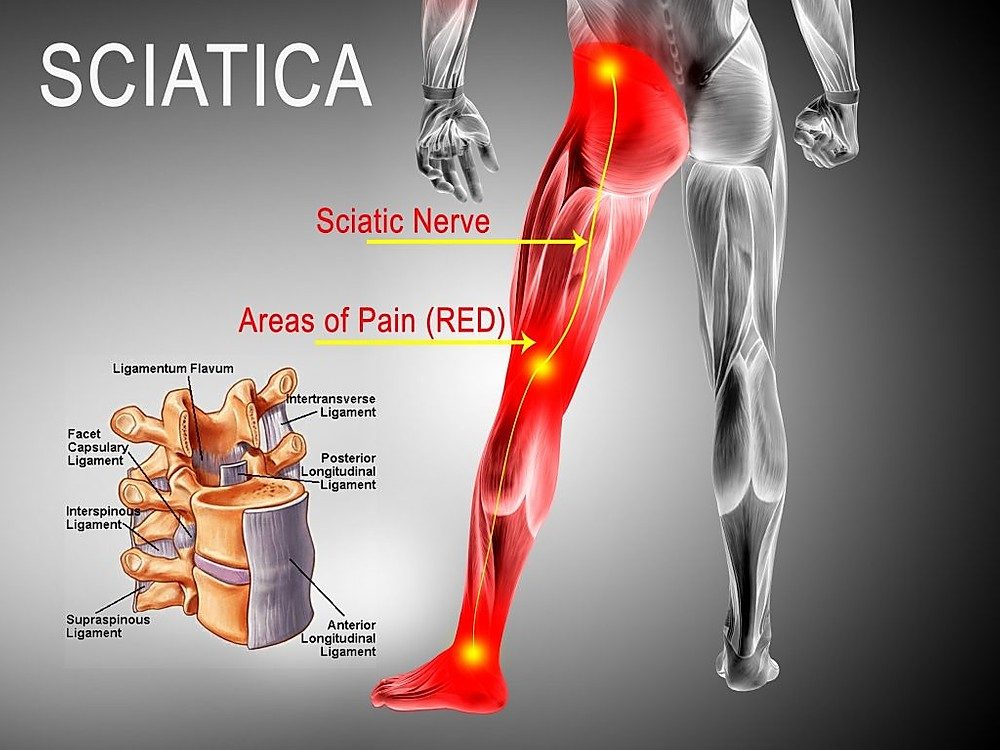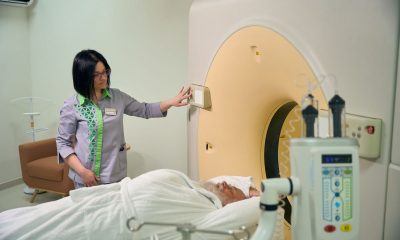Sciatica
Can sciatica cause calf pain

Sciatica is a painful condition in the lower back and calf region. Sciatica symptoms include pain and weakness down one leg; in severe cases, a person may even be unable to stand. There are several possible causes of sciatica, including pregnancy, a slipped disc, or spinal stenosis (spinal canal narrowing and pinching of nerves within it). Physiotherapy can help treat sciatica. Peripheral neuropathy is another common cause of calf pain. Several things can damage the nerves in the calf, including being overweight, wearing heels that are too small, or bending forward when walking.
What Does Sciatica Pain In Calf Feel Like?
Sciatica is an unpleasant pain that originates in the low back and travels down the leg to the foot. It can be sharp or dull, ranging from a mild ache to numbness. It can also affect both legs at the same time. Symptoms may vary, and it is important to see a doctor to find out the cause of your symptoms.
A herniated disc or overgrowth of bone in the sciatic nerve can cause sciatica. It causes pain and numbness in the leg and can accompany other symptoms like muscle weakness and bowel changes. This condition is highly treatable, and several natural treatment methods exist.
How Do You Relieve Sciatica Pain In The Calf?
The first step to relieving sciatica pain is to relax. Take time to lie on your back and listen to your body. The more you sit, the more the pain will get worse. It would be best to stretch your lower back to relieve sciatica. Focusing on your lower back can help your leg stay straight and prevent pinching of the sciatic nerve.
Another effective exercise for easing sciatica pain is the hamstring stretch. For this exercise, you should place your foot on the outside of the knee of the other leg. If you cannot do this, use an ottoman or climb stairs. Then, bend your knees and release the hip of the raised leg. You can also use a yoga strap or a long exercise band to help ease the hip down.
How Long Does Calf Pain From Sciatica Last?
Sciatica is pain that originates in the low back and radiates down one or both legs. The pain is often sharp and may cause numbness or weakness. The pain may be so intense that you can barely walk. Symptoms can range from a mild ache to a burning sensation. The pain is typically located in one leg but may be felt in other parts, including the foot. Pain in this area can cause you to drop your foot while walking.
The treatment for sciatica usually focuses on decreasing pain and increasing mobility. Self-care measures can include applying ice or heat to the affected area to reduce inflammation and decrease pain. Other self-care treatments include warm showers and using a heating pad on a low setting. If the pain persists after these steps, consult with a physician.
Does Walking Help Sciatica?
While many believe walking can reduce sciatica, this claim isn’t entirely true. The problem is that walking can aggravate sciatica symptoms by placing additional stress on the spine. It is important to follow proper posture to avoid aggravating sciatic pain when walking. Avoid sitting with your shoulders hunched, and try to walk with your hips up and legs out. Walking with a limp can also irritate the sciatic nerve, causing pressure.
It is important to remember that everyone’s body is different. Some people may benefit from walking a few times per day, while others may benefit more from walking only once or twice a week. Listen to your body and slowly and gradually increase your walking frequency and duration. If you can’t tolerate a vigorous walk, consider using a stair climber or treadmill. Also, wear comfortable shoes with cushioned heels and avoid flip-flops.
Does Drinking Water Help Sciatica?
Drinking plenty of water is a natural way to reduce the pain associated with sciatica. It can also reduce inflammation in the lower back, promote healthy circulation, and boost the immune system. It can also help reduce the effects of muscle spasms and promote faster recovery from injuries. Those suffering from sciatica should drink at least seventy-five percent of their body weight in fluid ounces daily.
Water helps protect the discs and spine. Drinking at least eight 8-ounce glasses a day is recommended. However, if you exercise or spend lots of time in the sun, you may need more water. Do not drink seltzer water, as it contains carbonation, which may not help your condition.
Conclusion
This causes inflammation, pain, and often some numbness in the affected leg. Sudden, severe pain in the low back or leg and numbness or muscle weakness in the leg. The neck pain after a violent injury, such as a traffic accident. The piriformis muscle is located deep in the buttocks, and stretching can help relieve sciatic nerve pain. It typically improves with rest, physical therapy, and other self-care measures. Anti-inflammatories, prescription pain medications, steroids, and muscle relaxants can all be used to relieve pain and improve mobility in people with sciatica. Remain active and apply heat packs for pain relief on the lower leg and spinal cord.
Carefully step out of the stretch, and repeat it with your left leg forward and right leg back. Those symptoms could indicate a more serious problem that could lead to permanent nerve damage if you don’t get prompt treatment. Sciatica occurs when the sciatic nerve becomes pinched. Usually caused by compression of the 5th lumbar spinal nerve. Radiculopathy: refers to any disease affecting the spinal nerve roots. Avoid prolonged sitting or lying with pressure on the buttocks. Short bed rest is okay, but more than a few days does more harm than good.

Doctor Osvaldo Pepa, Neurosurgery Service Physician at Hospital San Martin, La Plata, Argentina. I graduated last November 16, 1984 with a Medical Degree at the Universidad Nacional de La Plata. The Medical Board of La Plata, District 1, licensed me as a Neurosurgeon in 1990. I hold a Provincial and National License and an active member of the Neurosurgery Society of La Plata, World Ozone Therapy Federation, and Inter American Society of Minimally Invasive Surgery.

























